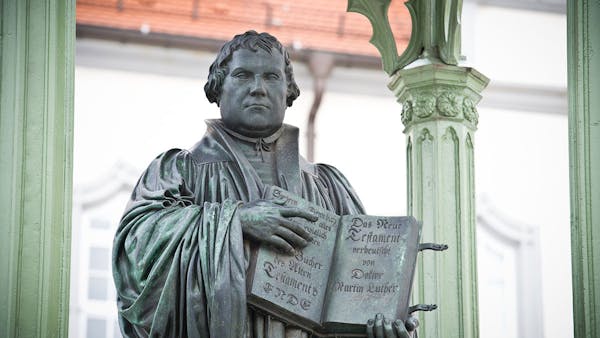The interview between Mary and Knox proved to be a significant milestone in the progress of the Reformation in Scotland and was a testament to the intensity of Knox’s allegiance to God over and above the Queen. The Queen summoned Knox to Holyrood Palace after hearing about one of his sermons. The conference between them took place in the presence of her brother Lord James Stuart and two ladies in waiting and she began the conversation by referencing some of his writings, most likely his little gem about Monstrous Women, before coming to the crux of her grouse with him.
The theses of Mary’s argument was simple; by leading the people to embrace a religion contrary to that of their Queen, Knox was leading the people to disobey their rulers and that was tantamount to treason. In addition to that because God required the people to obey their rulers Knox was also leading people to disobey God which was the worst kind of sin. Therefore Knox was not only seditious but sinful as well.
Knox’s rebuttal was that the only authority that could prescribe religious allegiance was God and not the Queen ergo the Queen was actually overstepping the boundaries of her authority and claiming authority that belonged to God alone. Therefore the Queen was actually blasphemous and potentially so were her religious affiliations.
Mary was clearly not happy and fumed that while Knox interpreted the Scriptures in one way the Roman Catholic teachers interpreted the Scriptures in a completely different way. “Whom shall I believe?” she demanded according to the historian Wylie “ and who shall be the judge?”
Knox then pointed to the supremacy of the word of God, the office of the Holy Spirit as the divine illuminator of that Word and the ability of Scripture to interpret itself independent of the interpretations imposed on it by Pope or Prince. History has it that Mary burst into tears out of sheer frustration, Knox was apparently and unsurprisingly unmoved at the outburst and continued to press his point home.
The three most dramatic turning points of the Reformation were Luther before Charles V at Worms, Calvin before the Libertines of Geneva in the Cathedral of St Pierre and Knox before Queen Mary in Holyrood palace. Knox’s confrontation with Mary at Holyrood was really one of the keynotes of the Reformation and highlighted freedom of conscience from the dictates of the church and the state.
One of the most striking things about John Knox was his faith and courage. Of him it was written “herein lies a man who never feared the face of another man” and perhaps this was because he was a man who only feared the face of God.
On the 24th of November 1572, as he lay dying, John Knox asked his wife to read to him John 17 in which are found the words that were the keynote of his life; “sanctify them through thy truth; thy word is truth” (John 17:17).

